Pickleball Rules: A Simple Guide to Getting Started
Pickleball has emerged as one of the fastest-growing sports in the United States, captivating players of all ages with its unique blend of tennis, badminton, and table tennis. Its allure lies not only in the fun and friendly competitive spirit of the game but also in the simplicity of its rules, making it accessible to both beginners and seasoned athletes. As with any sport, understanding the rules is crucial for enjoyable and fair gameplay. This article provides an in-depth examination of pickleball rules in the United States, covering various topics ranging from basic rules of play and scoring systems to specific regulations concerning the non-volley zone and tournament guidelines. By diving into the nitty-gritty of pickleball’s regulations, players will be empowered to maximize their enjoyment and performance on the court while fostering a respectful atmosphere for all participants.
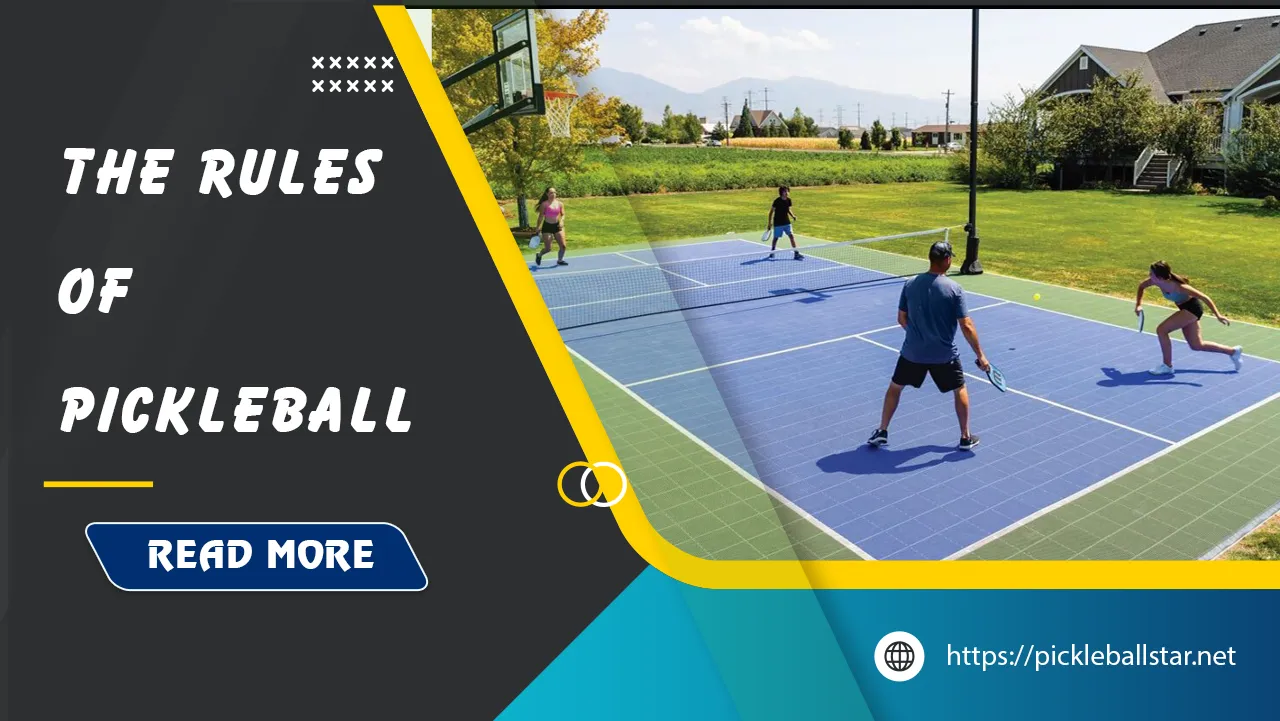
Basic Rules of Play
Pickleball is played as either singles (one player per team) or doubles (two players per team), with doubles being the more common format in casual play. Regardless of the format, the fundamental rules remain consistent. The game is played on a rectangular court measuring 20 feet wide by 44 feet long, and the net height is 36 inches at the sidelines and 34 inches at the center. With a paddle in hand, players are required to serve the ball underhand, ensuring that the paddle is below the server’s waist at the moment of contact. Players must serve the ball diagonally to the opposite service court and are allowed only one attempt to do so, except in the case of a “let” serve, which does not incur a fault.
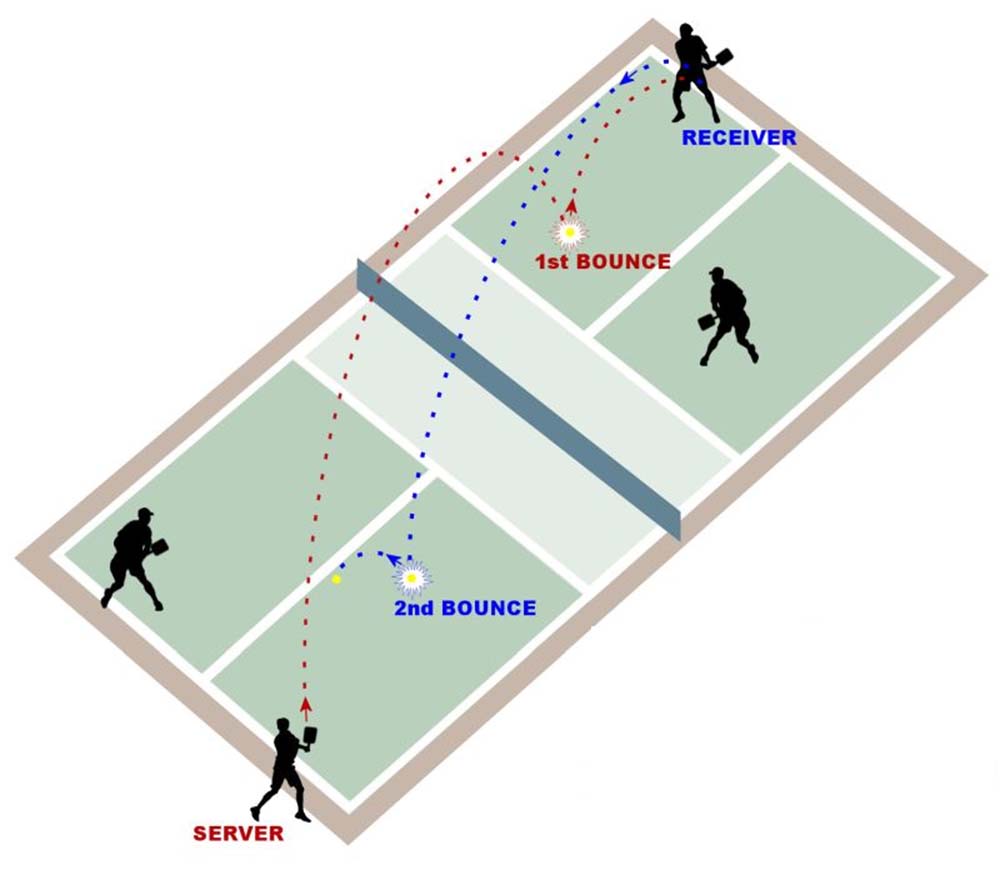
An intriguing aspect of pickleball rules is the “two-bounce rule,” which mandates that the ball must bounce once on each side of the court before players are permitted to begin volleying. This rule emphasizes the importance of skills such as placement and reflexes while promoting a more strategic game. Players can enter the non-volley zone also humorously referred to as the “kitchen” but they must not volley the ball while standing in that zone. This rule prevents overpowering plays at the net and encourages more thoughtful rallies.
In summary, the foundational rules of pickleball contribute to its entertaining dynamics, emphasizing fairness while promoting strategic gameplay. Understanding these basic rules establishes a solid groundwork from which players can develop their skills and enjoy this delightful sport.
Game Formats
When it comes to game formats in pickleball, participants will find flexibility within the structure while adhering to established protocols. Most casual games are played to 11 points, with the victor needing to win by at least a 2-point margin. Interestingly, some competitive formats extend the point threshold to 15 or 21 points, emphasizing the versatility of the game. Matches typically consist of the best of three games, fostering an engaging environment where players can demonstrate their abilities across multiple rounds.
In doubles play, the dynamics shift slightly compared to singles. Each player serves in rotation meaning both players on a team will serve before a side-out occurs, except at the start of the game. Once players become familiar with the structure of serving and receiving, they can begin to strategize accordingly. The serve’s sequence and timing establish an exciting rhythm to the match, allowing players to visualize their patterns of gameplay.
Comparing singles and doubles formats showcases the distinct experiences each offers. Singles demand quick reactions and stamina, while doubles relies on teamwork, communication, and strategic positioning. In both formats, players engage in meticulous footwork and shot placement to secure points, creating a vibrant interplay of styles and skills.
Overall, understanding the various game formats empowers players to adapt their strategies, hone their skills, and relish every exhilarating moment in this captivating sport.
Scoring System
The scoring system in pickleball is integral to gameplay, shaping strategies and dictating how players approach each point. In this sport, only the serving team can score points during a rally. This means that if the receiving team wins the rally, they simply gain the right to serve next but do not score any points. The server announces the score before every service, utilizing a three-number format: the serving team’s score, the receiving team’s score, and the server number (1 or 2 for doubles). This process allows players and spectators to track the progress of the game effectively.
A pivotal aspect of the scoring system is the requirement for a team to win by at least a two-point margin, which adds an exciting layer of tension to matches. As players approach the point limits, every serve, return, and rally becomes a critical moment that could determine the match’s outcome. This also encourages players to employ psychological tactics, gauging their opponents’ weaknesses and adjusting their strategies accordingly.
The simplicity of the pickleball scoring system promotes its accessibility to players of all levels. Newcomers swiftly grasp the concept while experienced players can experiment with more advanced strategies as they develop their skills. Future evaluations of game performance are also made easier under this scoring structure, with players keeping track of their successes and areas for growth.
In summary, the scoring system serves as the backbone of pickleball gameplay, shaping player interactions and creating thrilling narratives underscored by competition.
Faults and Violations
Just as in any sport, faults and violations are part and parcel of pickleball that ensures fair play and maintains the integrity of the game. Understanding these nuances equips players to avoid costly errors that could influence match outcomes. A fault occurs whenever a player violates specific rules during play, and it results in the opposing team gaining the opportunity to serve.
Common faults include:
- Serving out of bounds or into the non-volley zone.
- Failing to clear the net during a serve or a rally.
- Volleying the ball from within the non-volley zone, often referred to as the kitchen.
- Allowing the ball to bounce twice before making a return.
Additionally, players must be cautious about their momentum after hitting a volley. If a player’s forward movement carries them into the non-volley zone even if they only slightly step in this will also be counted as a fault.
These faults not only disrupt the flow of the game but also underscore the importance of maintaining control during play. Just as a builder ensures a solid foundation before constructing a structure, players must pick up on their positioning and shot selection, honing their skills to avoid these pitfalls.
The consequences of these violations go beyond immediate scoring. They present an opportunity for players to learn and grow, sharpening their understanding of the pickleball rules and their practical applications. By recognizing the significance of faults and actively working to minimize them, players can enhance their overall performance and cultivate a fulfilling sporting experience.
Court Dimensions
A crucial component of pickleball is its dedicated court dimensions, engineered to accommodate the dynamic nature of the game. The standard pickleball court dimensions are 20 feet wide and 44 feet long, mirroring the layout of a badminton court. This well-defined space fosters an environment where players can operate seamlessly in both singles and doubles plays.
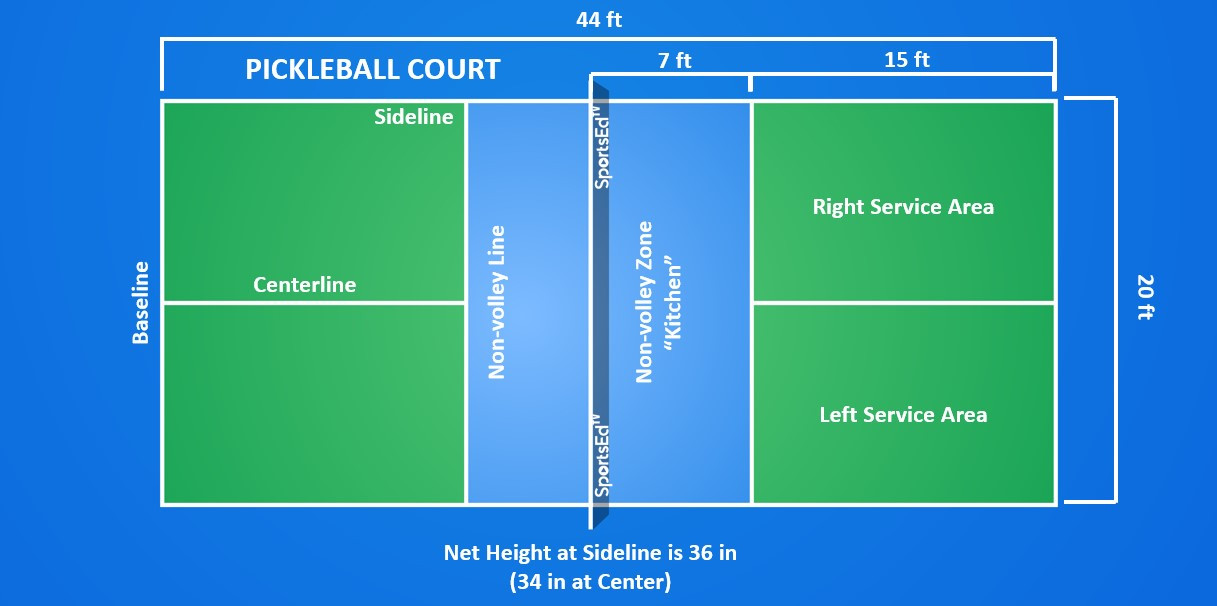
A distinctive feature of this court is the non-volley zone, commonly known as the kitchen, which extends 7 feet from the net on both sides. This designated area is pivotal in maintaining the game’s integrity, prohibiting players from volleying the ball, thus curbing aggressive plays near the net. Serving as an essential element of strategy and skill development, the non-volley zone compels players to rely on finesse rather than purely overpowering shots.
To provide a visual representation, here’s a simple breakdown of the court dimensions:
| Court Element | Measurement |
|---|---|
| Total Court Length | 44 feet |
| Total Court Width | 20 feet |
| Non-Volley Zone Depth | 7 feet from the net |
| Net Height (Center) | 34 inches |
| Net Height (Sides) | 36 inches |
These specifications inform players’ movements and shot selections dynamically. For instance, understanding the distance of the non-volley zone allows players to make split-second decisions while preparing to volley or return a shot.
Ultimately, the designated court dimensions are integral to the gameplay experience, crafting an arena that balances strategy, reflexes, and spatial awareness. Mastering this format enhances players’ overall performance and adaptability while shedding light on the essential elements of pickleball dynamics.
Equipment Specifications
In pickleball, players’ equipment plays a pivotal role in their performance and enjoyment on the court. Understanding the specifications of the crucial gear, including paddles, balls, and nets, is essential for new and seasoned players alike.
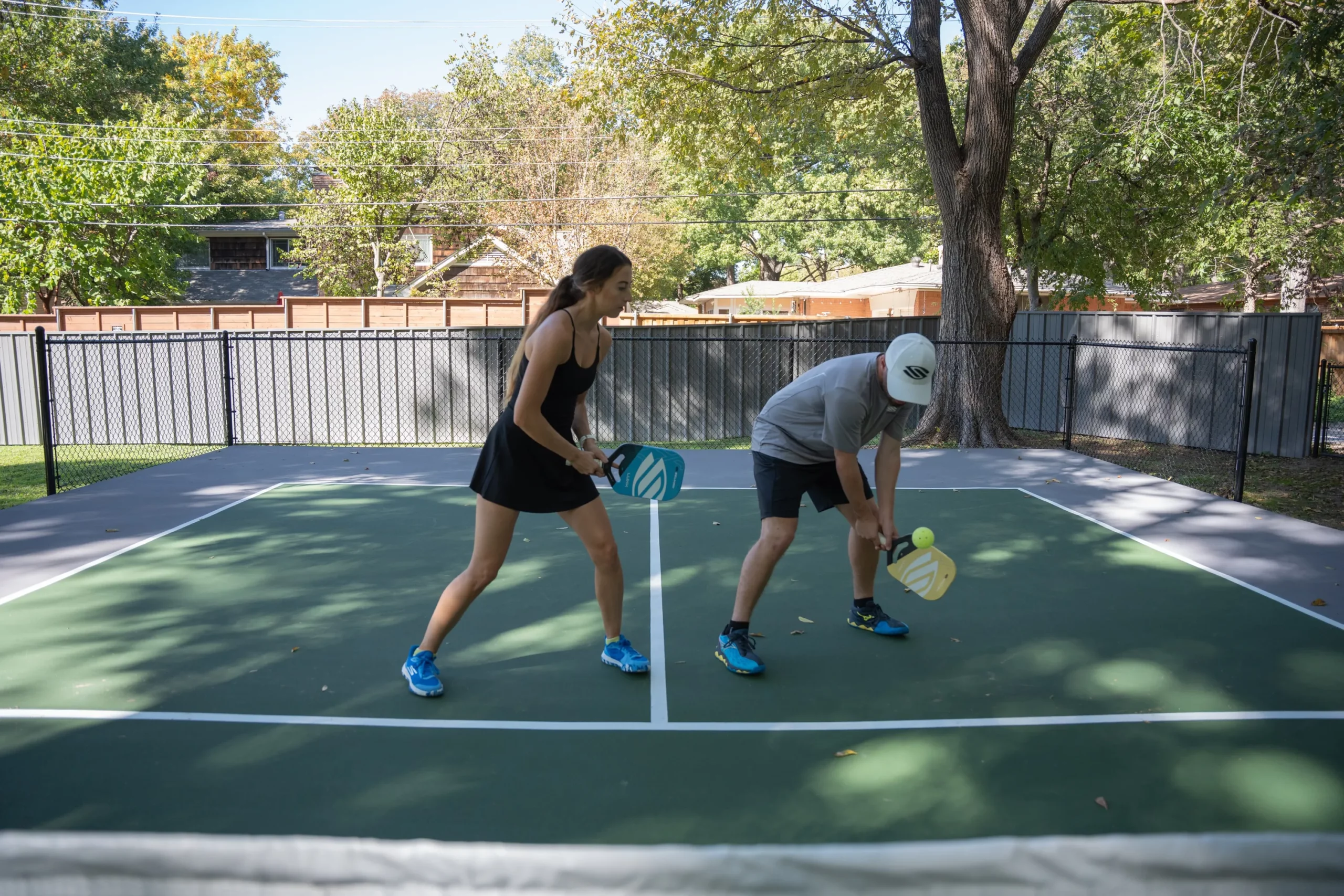
Paddles: Pickleball paddles are typically made of lightweight materials like composite, wood, or graphite. Their dimensions must generally adhere to regulations, with the paddle’s width not exceeding 24 inches and its overall weight varying between 6 to 14 ounces. The paddle’s core material, whether it’s polymer, aluminum, or foam, can significantly influence how the ball is struck and control over the shot.
Balls: The official pickleball is crafted from a durable plastic material, featuring holes that resemble those of a wiffle ball. Each ball is designed to withstand rigorous play, with outdoor balls being slightly heavier and harder to accommodate outdoor conditions. Indoor balls, on the other hand, are designed for a softer touch, allowing for greater control on smooth surfaces.
Nets: The net dimensions are crucial for maintaining proper gameplay standards. The standard pickleball net measures 22 feet in width, with a height of 34 inches at the center and 36 inches at the sides. Properly setting up a net with these dimensions is essential for accurate play, combining height and durability to withstand strong shots without sagging excessively.
| Equipment Type | Specifications |
|---|---|
| Paddle Width | Maximum of 24 inches |
| Paddle Weight | 6 to 14 ounces |
| Ball Material | Durable plastic with holes |
| Official Net Width | 22 feet |
| Net Height (Center) | 34 inches |
| Net Height (Sides) | 36 inches |
Each piece of equipment contributes to the overall experience of pickleball, and players keenly understand their choices’ impact on gameplay. Investments in quality gear such as a well-constructed paddle or the right type of ball can elevate one’s performance and enjoyment, akin to the way a musician benefits from selecting the right instrument for their craft.
In conclusion, adherence to the specifications outlined for equipment is essential for both casual and competitive play. Understanding the myriad elements contributes to a richer understanding of the game and an enhanced experience for players across the board.
Serving Rules
Serving is arguably one of the most critical elements in pickleball, impacting gameplay from the very start of each rally. Mastering the rules governing serve techniques, sequence, let serves, and other serving norms is essential for success on the court.
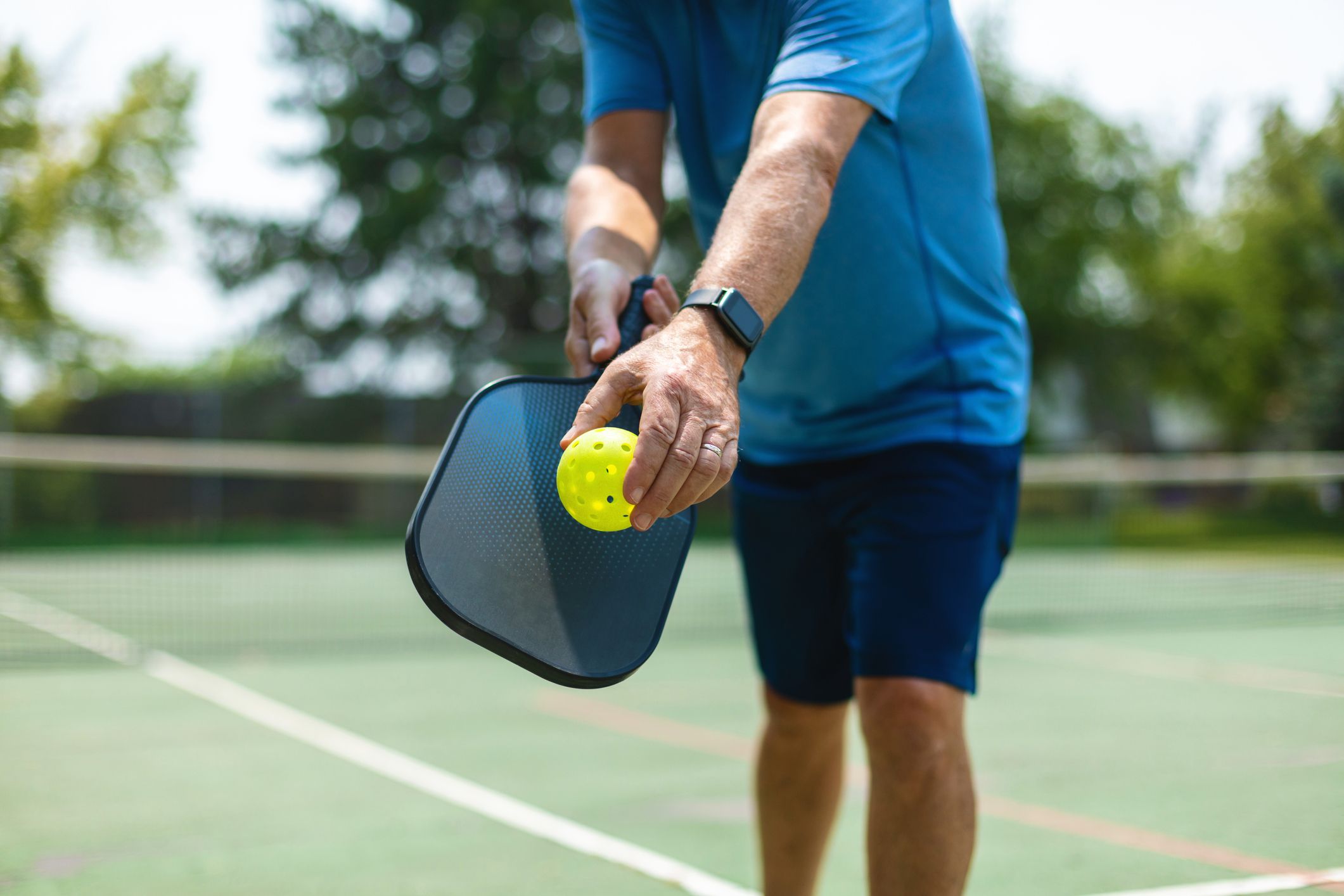
To begin, the serving player must use an underhand or backhand technique, ensuring that their paddle strikes the ball below waist level. Notably, the paddle head should also remain below the highest point of the wrist when contacting the ball. The server can opt to use a standard volley serve or drop serve – a unique feature in pickleball that adds variability and allows players to find their rhythm.
A key rule regarding the serving sequence dictates that the player must announce the score before executing the serve, while also ensuring to serve from the (right/even) or (left/odd) service court, depending on their team’s score. This systematic announcement and switching add layers of strategy to the game, allowing players to anticipate their opponents’ next moves.
Serving is governed by the “let serve” rule, which dictates that if the ball hits the net but lands in the correct service court, it’s considered a let serve. In this case, the server is granted another attempt, and there’s no limit to the number of let serves a player can make. This provision mimics the excitement almost inherent to a second chance, similar to a free-throw retry in basketball.
Faults in serving can be quite detrimental, such as failing to serve from the correct court, delivering an out-of-bounds serve, or committing an illegal return action. These faults can result in the loss of serve or, in some cases, points awarded to the opposing team.
Overall, mastering the serving rules is paramount for players looking to excel at pickleball. The intricacies surrounding the serve establish the initial tone of each rally, providing a platform for players to launch their plays strategically.
Service Techniques
Exploring the nuances of serving techniques can significantly enhance a player’s foundational skills in pickleball. The server’s approach to striking the ball shapes the game’s flow, impacting every rally that follows. For an effective serve, players must be equipped with a sound technique.
Primarily, players can choose between a standard volley serve (hitting the ball while it’s in the air) or a drop serve (where players drop the ball and hit it after it bounces). Each technique offers unique benefits, allowing players to customize their approach based on opponents’ weaknesses.
In executing an underhand or backhand serve, the server initiates the motion with a distinct upward arc, focusing on control and placement. A solid grip on the paddle is vital, ensuring that the server maintains control over ball trajectory and spin. As players incorporate a consistent follow-through with their swing, their serving accuracy is bound to improve considerably.
Effective practicing of serving techniques is essential to achieving precision. Players often benefit from experimenting with varying angles and speeds, allowing them to discover what works best for their style. For example, a slower-paced serve can catch opponents off-guard, while a rapid serve focuses on generating momentum right out of the gate.
Another critical element to consider is foot positioning. A server can enhance their technique significantly by aligning their feet correctly behind the baseline. Proper alignment ensures stability during the serve, leading to better control over shot execution. Moreover, planting the feet appropriately can also impact balance, enabling a more powerful serve.
In conclusion, refining service techniques through practice and experimentation is fundamental for success in pickleball. The ability to deliver effective serves not only sets the tone for the game but also fosters confidence and control across all competitive scenarios.
Serving Sequence
Understanding the serving sequence is an integral part of pickleball gameplay. This sequence dictates how players must approach serving during the course of a match, influencing both strategy and execution.
Initially, it’s crucial to note that before serving, the server must call out the current score, which consists of three parts: their own team’s score, the opponent’s score, and the server number (1 or 2). This transparency ensures that all players and spectators are on the same page regarding the score progression, mirroring how clarity is essential in any successful endeavor.
In terms of serving position, the server must stand behind the baseline, ensuring that their feet remain grounded until the moment they hit the ball. Players must be vigilant about serving from the correct service court: they serve from the right side when their score is even and from the left while their score is odd. This alternating side of serving emphasizes the inherent strategy involved in pickleball, where players can position themselves optimally based on the game state.
For doubles matches, both players on the serving team are allowed to serve before a side-out occurs. However, at the start of each game, only one player from the serving team will serve first. Upon switching sides after a point, players will continue alternating the service courts, ensuring that both teams gain exposure to different angles and positions throughout the match.
Players can prepare for their turn to serve by observing their opponents, gauging their body language and positioning as they prepare to receive the serve. This anticipation not only enhances a player’s strategic approach but also fosters a deeper appreciation for the tactical nature of pickleball.
In summary, the serving sequence is foundational to pickleball gameplay. By adhering to these rules and strategies, players can maintain clarity, flow, and excitement throughout matches, solidifying their grip on the game’s narrative.
Let Serves Rule
The “let serve” rule adds an intriguing twist to the game of pickleball, enhancing both the tactical play and overall enjoyment of the sport. A let serve occurs when a serve hits the net but still lands in the correct service court. In such instances, players are granted the opportunity to replay the serve without incurring any penalties or faults.
One of the fascinating aspects of the let serve rule is that there’s no upper limit on how many times a server can execute a let serve throughout a match. This provision resonates with the spirit of fairness and chance, lending an element of excitement that parallels the unpredictability often found in sports. Players may feel a lift of hope when a serve grazes the net, leading them to think twice about their technique and shot placement.
From a strategic standpoint, embracing opportunities presented by let serves can reshape a player’s mindset. A successful let serve serves as a reminder of the game’s fluidity, encouraging players to maintain resilience in the face of challenges. Just like a quarterback in football, who may scramble back and launch a Hail Mary after a disrupted play, pickleball players can capitalize on let serves to re-establish control of the game.
Understanding this rule profoundly alters a player’s approach to serving. Players may become more daring in their technique, feeling emboldened to experiment with spin or angles that could lead to more frequent let serves. It also promotes a strategic discussion among players, as they navigate how to maximize their serving approach for the best possible outcomes.
In summary, the let serve rule fosters an environment of fairness and opportunity within pickleball. It reinforces the idea that every serve matters, significantly impacting gameplay while maintaining an engaging atmosphere for players at all levels of experience.
Serving Faults
Serving faults can drastically change the outcome of a pickleball match, making it essential for players to be well-versed in the various serving-related infractions that may occur throughout gameplay. Understanding these common faults ensures that players adopt methods to minimize mistakes, ultimately enhancing their performance on the court.
Several faults are critical to recognize in pickleball serving.
- Incorrect Service Court: Serving from the wrong side of the court can lead to a fault. Players must serve from the right side when their score is even and from the left side when it’s odd.
- Out of Bounds: If the ball lands outside the designated service area – generally marked by the boundary lines – the serve is deemed a fault.
- Into the Non-Volley Zone: Serving the ball into the non-volley zone directly disturbs the gameplay flow and results in a fault.
- Illegal Serving Motion: Engaging in a serving motion that violates regulations, such as hitting the ball above the waist or with an upward arc that doesn’t comply with the rules, will also lead to a fault.
These faults serve as reminders of the importance of preparing for each serve methodically. A player must cultivate awareness of their stance, foot positioning, and swing mechanics to minimize mistakes during service. Additionally, practicing serving under high-pressure conditions can help players develop their accuracy and consistency, replicating the intensity typically found in competitive matches.
In summary, recognizing and understanding serving faults is crucial to achieving success in pickleball. By honing techniques and consistently practicing, players can diminish the chance of inadvertent mistakes, ensuring they focus on executing their strategies effectively and maintaining control of the game.
See more: The Pickleball Overhand Serve: Unlocking Power and Precision
Special Rules for Drop Serves
The drop serve offers an exciting alternative in pickleball, allowing players to mix up their service techniques for strategic advantages. Understanding the specific rules surrounding drop serves can elevate a player’s gameplay and introduce new tactics to surprise their opponents.
To execute a drop serve, players must follow a few essential steps. First, the ball must be dropped from a natural, unaided height, typically around shoulder or chest level, without any additional force. This controlled action emphasizes the importance of skill and timing, maintaining the balance necessary when striking the ball after it has bounced.
The drop serve also has specific positioning requirements. The server’s feet must remain behind the service line until they’ve struck the ball. This rule reinforces the foundation of proper technique, urging players to adopt a consistent stance to maintain control during service. Additionally, the server must keep at least one foot grounded until they make contact with the ball, further solidifying their base before executing the drop serve.
Interestingly, players have the option to use either a forehand or backhand motion while executing a drop serve, enabling them to experiment with various techniques to gauge opponents’ responses. This versatility promotes adaptability throughout matches and allows players to maintain an element of unpredictability, reminiscent of a magician pulling a rabbit out of a hat.
Moreover, leveraging drop serves can serve a dual purpose; they can disarm opponents and provide opportunities to reset the momentum in a game. For example, when up against a powerful opponent, employing a drop serve can disrupt their rhythm and force them to reconsider their approach, fostering moments of doubt and hesitation.
In conclusion, mastering the rules and techniques surrounding drop serves can significantly enhance a player’s competitiveness in pickleball. By adopting this skill set, players can refine their capabilities and advocate for their own growth through experimentation and persistence.
Non-Volley Zone Regulations
The non-volley zone, commonly referred to as the “kitchen,” plays an essential role in the dynamics of pickleball. This area highlights the importance of strategy while also promoting fair play by maintaining a balance between offense and defense. Understanding the regulations that govern the non-volley zone ensures players engage effectively within its parameters.
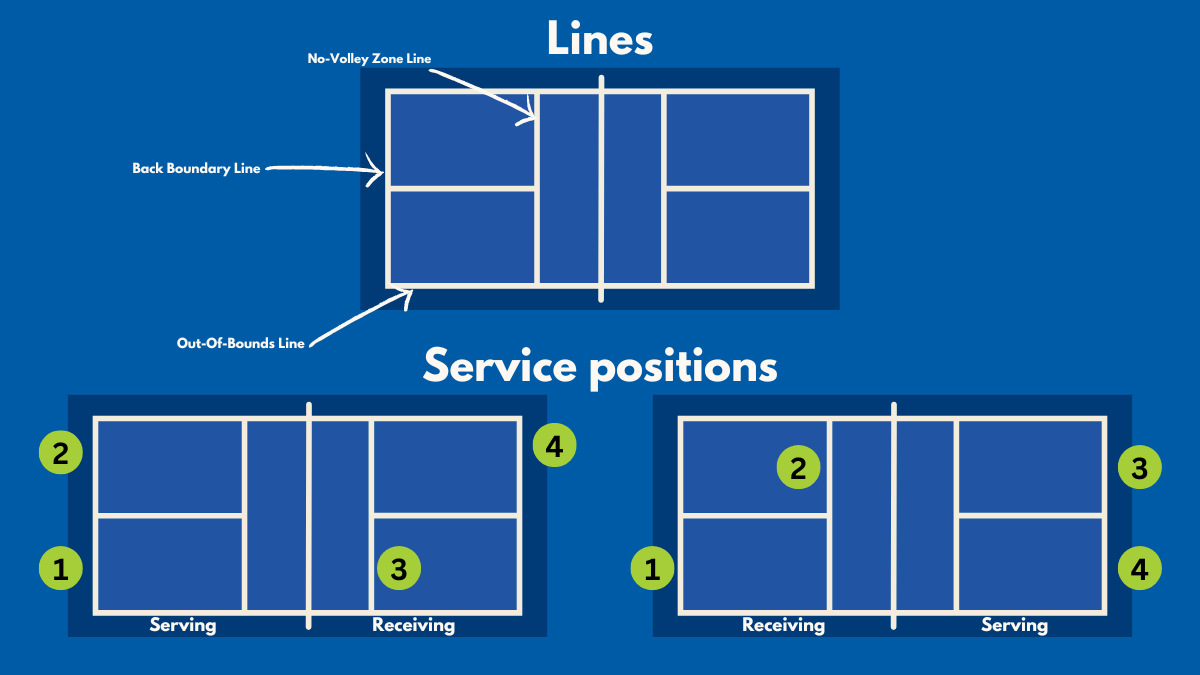
Definition of Non-Volley Zone
The non-volley zone, or kitchen, is defined as a 7-foot deep area extending from both sides of the net. This region aims to create a safe space where players cannot volley the ball meaning they cannot hit it in the air without allowing it to bounce first. The lines defining the non-volley zone are marked with a minimum width of 2 inches and are crucial for establishing the area’s boundaries during play.
The purpose of this zone is multifaceted. It prevents players from executing aggressive net volleys that may disrupt the game’s flow or advantage stronger players at the net. Striking the balance between offensive and defensive play is an essential aspect of pickleball, and the non-volley zone is a core part of that foundation, leveling the playing field for all participants.
Volleying Rules
The rules surrounding volleying in the non-volley zone are critical for maintaining the spirit of fair play in pickleball. Players are prohibited from volleying the ball while standing in the non-volley zone, fostering a more strategic and skillful approach to rallies. A volley can only be executed once players are positioned outside the non-volley zone, ensuring an emphasis on placement and finesse.
Players must also be aware of their position and momentum while executing volleys. Should a player inadvertently step into the non-volley zone during a volley or if any part of their body makes contact with the non-volley zone, a fault is called. This awareness is vital for developing a successful strategy, as players must navigate not only the ball but also their own positioning on the court.
Moreover, if a ball bounces in the non-volley zone, players can legally enter the area to make a return shot. The two-bounce rule still applies, allowing players to maintain their court position and utilize the non-volley zone strategically. This flexibility enhances the game’s excitement, as players maneuver between attacking and defending based on the play’s dynamics.
Faults Within the Non-Volley Zone
Understanding the faults that can occur within the non-volley zone is essential for pickleball players seeking to refine their strategies. Violations relevant to the kitchen can have significant consequences, from lost points to turnovers.
One form of fault occurs if the player makes contact with the non-volley zone while strain from their momentum carries them into the area. This infraction covers not only the player but any equipment they may be using, such as paddles or clothing that brushes against the boundary.
Another key fault arises when a player performs a volley while physically present within the non-volley zone. This not only highlights the importance of spatial awareness but also reinforces the need for precise execution when approaching the net. While players may desire to attack, they must prefer strategy, controlling their position to comply with the rules.
Mastering awareness of non-volley zone faults can greatly enhance a player’s competitive edge. Players can adapt their movements when approaching the net, carefully monitoring their positioning to ensure they respect the boundaries while simultaneously applying pressure on their opponents.
Legal Presence in the Non-Volley Zone
The legal presence within the non-volley zone is a critical aspect of pickleball’s strategic gameplay. Players can enter the kitchen at any time, provided they are not volleying the ball. This nuanced guideline encourages strategic risk-taking, carving out opportunities for both attack and defense.
For instance, players may enter the non-volley zone after their opponent has hit the ball, providing a window to execute a precise drop shot or neutralize an opponent’s offensive play. This positioning allows players to capitalize on the kitchen, pushing their opponents into regressive strategies.
Additionally, players can legally occupy the non-volley zone while remained inside during a rally; however, they must ensure they don’t infringe upon the volleying rules. This element of movement fosters exquisite timing and practice, ultimately enhancing the enjoyment and flow of gameplay.
In doubles play, teamwork becomes increasingly vital, as players must maintain communication regarding their positions within the non-volley zone. As strategies evolve and adapt, every player can leverage the kitchen’s flexibility to create shortcuts or counterplays that build toward victory.
Importance of the Non-Volley Zone
The significance of the non-volley zone in pickleball cannot be overstated. It serves as a foundational rule in promoting skillful gameplay, balancing strategies, and ensuring equitable competition. By preventing aggressive volleys from the players closest to the net, the non-volley zone encourages a more thoughtful style of play and strategic decision-making.
The kitchen expands the horizon for creativity and finesse, requiring players to develop their abilities to mix aggressive plays with careful control. This necessity for versatility results in exciting exchanges filled with strategic maneuvering as players seek to exploit their opponents’ weaknesses while keeping to the boundaries of the rules.
Moreover, understanding and respecting the non-volley zone fosters sportsmanship and camaraderie among players. Emphasizing fairness ensures that individuals from different backgrounds and skill levels can coexist warmly, fostering an atmosphere of inclusivity and collaboration for all.
In conclusion, the non-volley zone significantly shapes pickleball’s gameplay and strategies. By adhering to the rules governing its use, players can develop their skills while promoting a competitive yet friendly game, ultimately contributing to a fulfilling and enriching experience.
Playing Techniques
Having a repertoire of effective playing techniques is essential for excelling at pickleball, allowing players to diversify their skills and adapt to various opponents and situations. Whether it’s executing groundstrokes, mastering volleys, or honing strategic movements, each technique contributes to elevating one’s game.
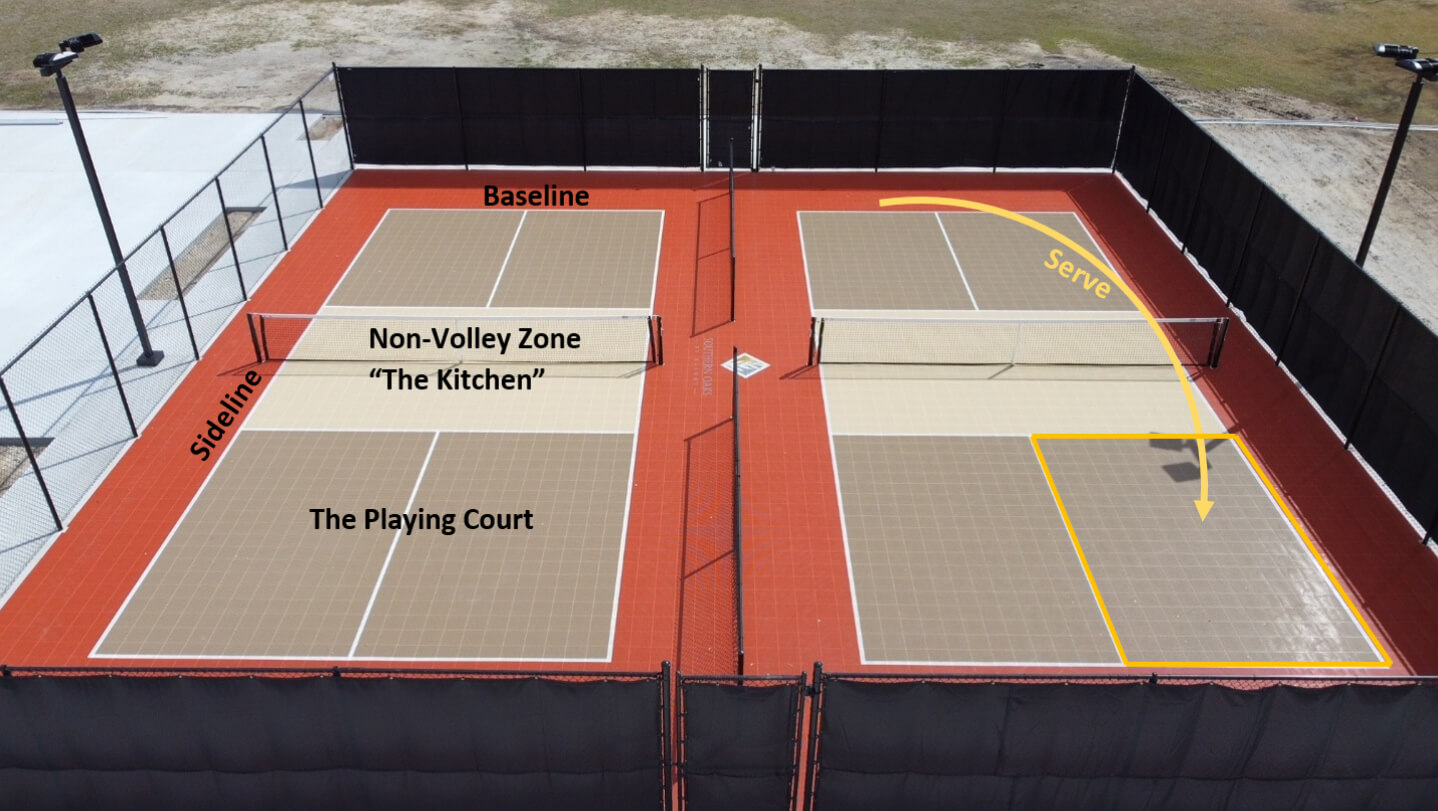
Groundstrokes
Groundstrokes are fundamental to pickleball gameplay, establishing a foundation for accurate shot placement and powerful returns. The two main types of groundstrokes prevalent in the sport are the forehand and backhand groundstrokes, each serving a unique purpose on the court.
The forehand groundstroke is generally regarded as the more powerful of the two, executed with the dominant hand. It enables players to generate speed and trajectory, making it an invaluable asset for aggressive plays. In contrast, the backhand groundstroke, performed with the non-dominant hand, may not deliver the same power but can be equally effective with proper technique and placement.
Successful execution hinges on the player’s grip, stance, and swing mechanics. A fluid sequence begins with a strong grip on the paddle, transitioning into a controlled stance with knees bent and weight evenly distributed. From there, players must focus on generating a smooth, consistent swing, with attention to making contact with the ball in front of their body.
Incorporating practice drills centered on both groundstrokes can significantly enhance consistency. Variability in shot selection, spin, and placement can be explored, allowing players to become versatile in their abilities and extend their tactical options during matches.
For a clearer perspective, here’s a simple overview of groundstroke types:
| Groundstroke Type | Strengths | Technique Focus |
|---|---|---|
| Forehand | Increased power | Grip, swing path, follow-through |
| Backhand | Control and placement | Grip, follow-through, timing |
Mastering effective groundstrokes results in a well-rounded skillset, laying the groundwork for players pursuing higher levels of pickleball.
Volleys
Mastering the volley is crucial for successful pickleball gameplay. Volleys allow players to intercept and respond to opponents’ shots quickly, maintaining pressure on their adversaries throughout each rally. A well-timed volley can be a game-changer, turning the momentum in favor of the player executing the shot.
To enhance their volleying technique, players should adopt a few fundamental practices. First and foremost, utilizing a split step immediately before the opponent strikes the ball can set the stage for a quick response, enhancing their overall readiness. Engaging the core and shoulders during the volley motion generates power while ensuring better control as players maintain a compact swing throughout.
Practicing volleying techniques can further improve hand-eye coordination and reflexes, valuable skills when engaging in fast-paced exchanges typical in pickleball games. Players can experiment with different angles and spins based on how opponents respond, leveraging these nuances to maximize the effectiveness of their volleys.
In doubles play, communication between partners is vital as they coordinate positioning and shot selection. By recognizing their opponents’ tendencies and adapting accordingly, doubles teams can effectively cover the court to maintain defensive integrity.
Overall, volleying is an integral skill within the sport of pickleball that emphasizes timing, control, and teamwork. Investing time in developing excellent volley techniques enhances players’ competitive edge while fostering increased enjoyment behind the net.
Smash Technique
The overhead smash is a powerful finishing shot in pickleball, serving as a potent weapon against opponents who may be distracted or out of position. Perfecting the smash can lead to many pivotal points, ultimately shifting the balance of play.
Executing an effective smash involves positioning oneself underneath the ball and generating momentum towards the net. A firm grip on the paddle ensures control while executing a smooth swing, focusing on timing and precision. As the player makes contact with the ball, proper follow-through promotes optimal trajectory, sending the ball downward with accuracy.
The smash can be particularly useful when responding to lobs, allowing players to regain control over a point with impressive ferocity. As players refine their smash technique, they can experiment with various angles and spins to keep their opponents on their toes – a move reminiscent of juggling multiple bowling pins while maintaining equilibrium.
Practicing the smash in drills can build confidence and strength while enhancing overall performance. Partner exercises that focus on reinforcing timing and placement can prepare players to execute the smash with accuracy during live matches, where the pressure is higher.
In summary, honing the smash technique is vital for players seeking to elevate their competitive gameplay. Utilizing this powerful shot effectively can lead to transformational moments and satisfied victories on the court.
Dinking Strategy
Dinking a term that may seem whimsical represents a critical aspect of savvy pickleball strategy. Dinks involve soft, controlled shots that are executed from up close to the net. Their primary purpose is to create openings and force opponents into vulnerable positions, where they may struggle to respond effectively.
Successful dinking requires finesse over power. Players should aim to create angles and placements that keep the ball low above the net, complicating the return for their opponents. Incorporating height and depth into dinks can frustrate defenders, compelling them into uncomfortable plays.
Practicing dinking techniques through targeted drills can significantly improve accuracy and consistency. By varying placements across the court, players can cultivate a keen understanding of how each shot affects their opponents’ reactions, showcasing their ability to mix up their plays. This unpredictability can create clear advantages during densely contested rallies.
Positioning and movement greatly influence successful dinking strategy. Players must anticipate the flow of the game and make quick adjustments to maintain a competitive edge. By mastering their opponent’s tendencies, players can employ strategic dinks that disrupt the rhythm of the match, transforming the kitchen into their battlefield.
In conclusion, dinking is an essential component of effective pickleball strategy. By honing this skill and understanding its impact on gameplay, players can elevate their performance while enjoying the intricacies of the sport.
Positioning and Movement
Positioning and movement are key elements in mastering the game of pickleball. As players navigate the court, their ability to anticipate opponents’ shots and adopt optimal positioning often dictates the course of each rally. Understanding these dynamics can significantly enhance gameplay and overall success on the court.
Players should focus on maintaining a balanced stance while preparing for dynamic footwork. Quick lateral movements and controlled shifts forward or backwards allow players to reach the ball more effectively. Keeping a low center of gravity is essential; it helps players maintain stability during explosive movements while enhancing their ability to respond promptly to their opponent’s shots.
Additionally, communication and coordination are crucial in doubles play, where partners must be acutely aware of each other’s positions and actions. Utilizing designated signals can effectively communicate their intentions while covering gaps in court coverage, minimizing the risk of miscommunication.
Positioning extends beyond immediate responses to the ball; it is also about reading the game. Players must develop a keen sense of awareness regarding their opponents’ tendencies and shot selections, enabling them to position themselves strategically. For example, if an opponent is known for smashing shots, positioning slightly deeper can help players prepare to counter accordingly.
Overall, mastering positioning and movement in pickleball lays the groundwork for success on the court. By refining these essential skills, players can optimize their performance and elevate their engagement in this exhilarating sport.
Line Calls and Court Boundaries
Understanding line calls and maintaining awareness of court boundaries are crucial components of pickleball that influence the flow of the game and player interactions. Players must navigate these responsibilities with attention and respect while fostering a fair competitive atmosphere.
Determining In or Out
One of the most fundamental tasks for players during gameplay is determining whether a ball is “in” or “out.” According to established rules, a ball is considered in if it lands on or within the boundary lines that mark the court. This applies to both serves and volleys, with the exception of the non-volley zone line. In this case, if the ball lands on that line, it is considered out.
An important aspect of determining an “in” or “out” call is the benefit of the doubt rule. In the sport of pickleball, if there is any uncertainty regarding a call, the player should favor the opponent, calling balls that are unclear as “in” a practice that promotes fair play and integrity on the court.
Players must also remain vigilant in monitoring the ball’s trajectory while maintaining focus on their own position, emphasizing the need for a heightened awareness of surroundings throughout play. This practice boosts confidence and enhances their ability to make accurate calls.
Line Call Protocol
In terms of line call protocol, players are responsible for monitoring the lines on their side of the court. This responsibility includes calling their own lines as well as those of their opponents, collectively contributing to the integrity of the match. However, if a referee is present, they will enforce the line call protocol, meaning only the server is responsible for the centerline during service.
When players make a call, they should do so promptly and with confidence. If unsure about a call, they should engage their opponent’s opinion before making a final decision, reinforcing sportsmanship and communication throughout gameplay.
Whenever either player challenges a line call made by their opponent, they may appeal to the referee for a final ruling. Dispute resolution through such protocols fosters a respectful and fair atmosphere essential for maintaining enjoyable play.
Role of Line Judges
In matches where line judges are present, they hold the responsibility of making final determinations on line calls. Having line judges can greatly enhance the accuracy of calls, allowing players to combat disputes that may arise throughout play. Typically, line judges are positioned along both baselines and the sidelines, facilitating affirmative decision-making on ball placements.
Even in matches without line judges, players should strive to practice calls confidently and integrally, ensuring they establish their own sense of clarity and authority in the game. Engaging in practice with experienced players can significantly bolster one’s ability to make accurate calls and develop a keen eye for varying angles and placements.
Common Disputes
Disagreements can naturally arise in pickleball matches regarding line calls and boundaries. When faced with a dispute, players should prioritize cooperation and open communication over hostility. The benefit of the doubt rule applies here as well, whereby players should favor their opponent in uncertain scenarios.
If disagreements occur, players should first attempt to resolve the issue amicably through discussion, respecting each other’s perspectives. However, if resolution remains elusive, the player may escalate the matter to a referee or designated authority, who can provide an unbiased judgment leaping into the fold.
Appeal Procedures
The appeal procedures serve as an essential mechanism for addressing disputes in pickleball matches. If a player is uncertain of their call, they can appeal to the referee for a final decision, especially in instances where both players disagree. However, players must adhere to the benefit of the doubt rule, opting for a call that favors the opponent.
While disputes may occasionally arise, utilizing these appeal procedures allows players to navigate conflicts in a fair manner. Emphasizing cooperation, respect, and open communication can help maintain a positive atmosphere throughout the gameplay experience.
Overall, understanding line calls and court boundaries in pickleball is essential for ensuring fair and accurate play while fostering an environment of respect among players.
Game Variations
The adaptability of pickleball shines through its diverse variations, catering to players of all ages and skill levels. The spirit of the game can be enjoyed in various formats, each offering unique challenges and experiences.
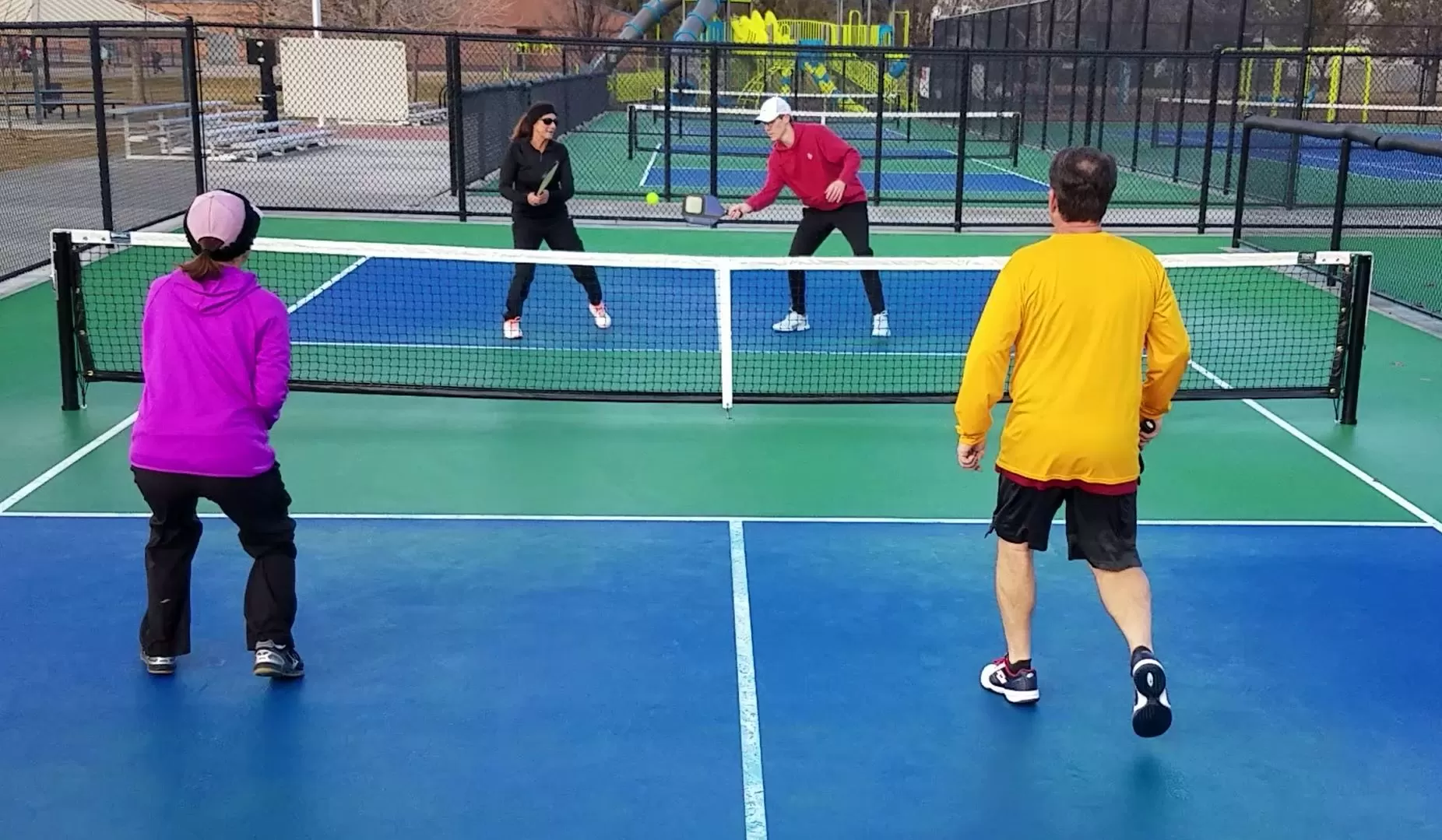
Singles vs Doubles
In singles play, only one player stands on each side of the court, highlighting individual skills, strategy, and stamina. Players must cover the entire side of the court themselves. The scoring for singles is traditionally simpler, with only the server’s and receiver’s scores being announced, promoting a more direct focus on gameplay.
Conversely, doubles involves two players per team, requiring cooperation and communication. The dynamics of doubles play can vary significantly, as players must coordinate their movements, share responsibilities on the court, and strategize about shot selections. In doubles, the scoring system includes the nuanced aspect of indicating the server number, bolstering teamwork in the process.
Here’s a simple summary of the key differences:
| Aspect | Singles | Doubles |
|---|---|---|
| Court Coverage | One player covers half | Two players share coverage |
| Scoring | Server’s and receiver’s score only | Serving team score, receiving team score, and server number |
| Communication | Individual strategy | Team cooperation |
Recreational Play vs Tournament Play
Recreational pickleball emphasizes enjoyment, camaraderie, and skill development among players without stringent rules. Players of varying skill levels can engage flexibly at their leisure, allowing for casual and inclusive settings that celebrate the sport.
In contrast, tournament play adheres to standardized rules and regulations to establish fairness and structure. Here, the stakes are heightened as players rely on advanced strategies and techniques aimed at gaining an edge over their opponents. Tournaments emphasize a competitive atmosphere, promoting personal bests and fostering camaraderie among like-minded players.
Variations in Scoring
Scoring variations further contribute to the diverse landscape of pickleball. The traditional scoring system is a rally point model, wherein only the serving team can earn points during a rally; this scoring format remains consistent through variations in gameplay.
In casual play, games are often played to 11 points, while competitive matches tend towards 15 or even 21 points for their final sets. The emphasis on “winning by 2 points” solidifies a scoring structure that maintains tension and excitement throughout match play.
In summary, variations in scoring invigorate the gameplay experience, allowing new styles of play to emerge while promoting engagement among players.
Age and Skill Level Adaptations
Pickleball offers stunning adaptability relative to age and skill levels. Beginners often focus on developing fundamental skills, such as serving, groundstrokes, and dinking to maintain consistency during rallies. This progressive learning curve invites players to delve deeper into strategy and skill development over time.
Those in intermediate stages often refine shot placement, master the third-shot drop, and develop strategic decision-making. Advanced players adopt mental toughness and shot variations, exploiting opponents’ weaknesses based on observed tendencies throughout games.
Moreover, adaptations for younger or differently-abled players can include altered court sizes, equipment, rules, and timelines tailored to their individual needs. This adaptability fosters inclusivity, ensuring everyone can enjoy the game regardless of age or ability.
Mixed Doubles Rules
Mixed doubles in pickleball maintains the same fundamental rules as standard doubles but introduces a male and female player on each team, creating an engaging inter-gender dynamic. This arrangement provides opportunities to capitalize on diverse strengths, combining finesse with power while requiring careful strategy to outmaneuver opponents.
Partners must communicate how they will utilize both players’ strengths to create advantageous exchanges during the match, ultimately fostering a collaborative atmosphere.
In conclusion, the game variations within pickleball add depth and flavor to the sport, ensuring players of all backgrounds and skill levels can find enjoyment while fine-tuning their strategies and skills.
Tournament Regulations
As pickleball grows in popularity, understanding the tournament regulations becomes increasingly important for players seeking to dive deeper into the competitive landscape. Familiarity with the rules enables participants to approach tournaments confidently and ensure a fair playing field.
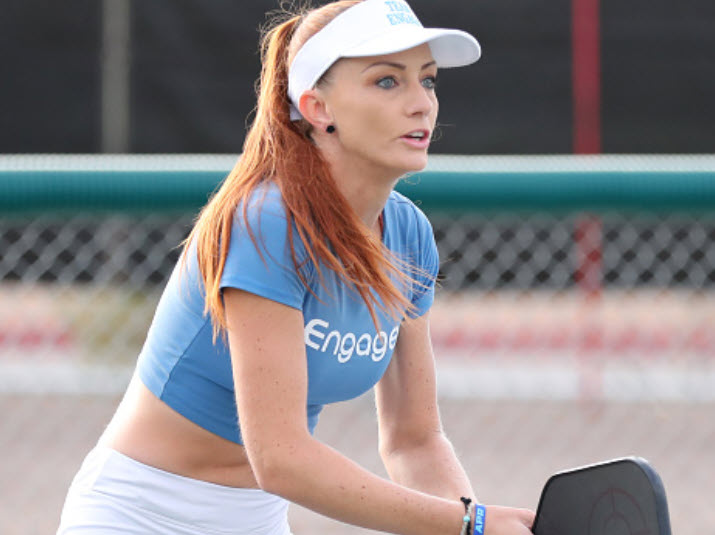
Registration and Eligibility
Tournament players must proactively register for events before specified deadlines, securing their slots and avoiding late registration penalties. Eligibility requirements can include age, skill level, and gender factors that help maintain balanced competition within fields.
Many tournaments require participants to be members of specific pickleball organizations or clubs, further solidifying structure and accountability within the community. By engaging with such institutions, players ensure they are aligned with the broader objectives of promoting the sport.
Match Format
Tournament match formats can vary, yet the recommended framework typically follows a best of three games to 11 points, with the requirement of winning by at least one or two points. Some variations may include a single game to 15 or 21 points that maintains this winning margin.
Skill-based seeding is often employed in tournament play to match players of similar skill levels against one another in the early rounds, ensuring a fair competitive experience that champions the spirit of the game.
Conduct and Sportsmanship
Players participating in tournaments are held to high standards of conduct and sportsmanship. This encompasses respect for opponents and the prevailing rules, with emphasis placed on fair play throughout the games. Unsportsmanlike conduct, such as using foul language or engaging in inappropriate gestures, is strictly prohibited.
Additionally, players are expected to demonstrate honesty in making line calls and collaborate in resolving situations not clearly covered by official rules. Upholding these principles ensures a collaborative and positive atmosphere for everyone involved.
Equipment Compliance
Tournament participation mandates adherence to established regulations regarding equipment compliance. The equipment utilized, including the paddles and balls, must meet size, weight, and bounce specifications as outlined in the USA Pickleball Equipment Standards Manual.
Tournament organizers retain the authority to conduct equipment inspections, ensuring that all participants adhere to regulations and fostering a level playing field for all competitors.
Penalties and Disqualifications
Violations of tournament rules or unsportsmanlike conduct may lead to penalties being enacted, such as points being deducted or games forfeited. For severe or repeated infractions, disqualification from the tournament may become necessary.
Consequences from disqualification can extend further, as players may face bans from future tournaments, reinforcing the commitment to maintaining fairness and integrity within the sport.
In conclusion, familiarity with tournament regulations equips players with the knowledge needed for competitive play. By adhering to these guidelines, participants can ensure a fair, respectful, and enjoyable experience while engaging with the broader pickleball community.
FAQs
Engagement with the rules and intricacies of pickleball fosters a deeper appreciation for the sport. Here, we address some frequently asked questions to clarify common concerns and promote better understanding.
What is the golden rule in pickleball?
The golden rule in pickleball emphasizes that players cannot volley the ball while standing inside the kitchen or non-volley zone. The ball must bounce once in this area before any player attempts to return it. This fundamental rule allows for a balanced and fair playing field, preventing stronger players from dominating at the net, fostering a spirit of inclusion for participants of varying experiences.
Can you ever step in the kitchen in pickleball?
Players can indeed step into the kitchen during a rally when the ball has bounced inside. After the bounce, they are free to play their shot while in the kitchen. However, one cannot volley the ball while standing in the kitchen, reinforcing the necessity of careful timing and strategy while navigating this critical area during gameplay.
How do you score in pickleball?
In pickleball, scoring is based on a unique system where only the serving team can score points during a rally. Games are typically played to 11 points, with the winner needing a two-point advantage. If the serving team wins the rally, they receive a point; if the receiving team wins, they gain the serve but do not receive points.
What are illegal serves in pickleball?
Several common illegal serves can occur in pickleball, including:
- Serving from the incorrect service court.
- Failing to serve within 10 seconds of calling the score.
- Serving out of turn or failing to switch sides before serving.
- Serving the ball to the wrong side of the court or outside of the cross-court area.
- Hitting the ball into the net during the serve.
Identifying illegal serves empowers players to refine their technique and optimize their game.
Conclusion
Understanding the key rules of pickleball in the United States unveils the structural elements that make the game both enjoyable and challenging. From foundational concepts like not volleying inside the kitchen, to essential rules of scoring and serving, players can enhance their gameplay and foster an inviting atmosphere for participants of all levels.
As players embark on their pickleball journeys, adherence to the rules breeds a sense of integrity and sportsmanship that is vital for a boosting community. Engaging with the vibrant variations of gameplay, tournament regulations, and fostering avenues of inclusivity elevates the pickleball experience while ensuring that all players can relish the joys, challenges, and friendships cultivated through this beloved sport.
Source
The information contained within this article draws from the USA Pickleball Rulebook, which serves as the comprehensive reference for official rules and regulations governing pickleball in the United States. The official body, USA Pickleball, is committed to maintaining and updating these rules to suit the growing pickleball community, emphasizing the importance of fair play and an enjoyable experience for players of all skill levels. By adhering to these guidelines, players can engage in this thrilling sport responsibly while maximizing their enjoyment and fostering lasting relationships.
